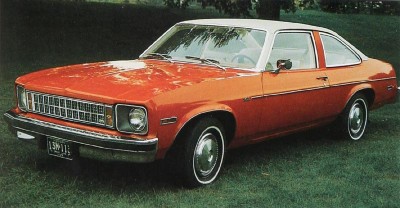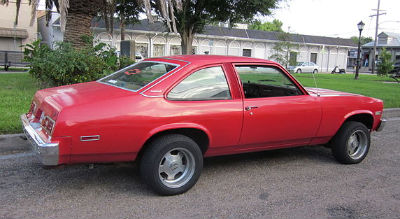 Produced for four production cycles that lasted for almost four decades, the Chevy Nova represented the entry of General Motors division Chevrolet into the compact muscle car market. Although it began as a comparatively budget-oriented vehicle in the 1960s, the car eventually blossomed into a popular and powerful automobile within the next few years, with its era peaking in the mid-’60s to mid-’70s.
Produced for four production cycles that lasted for almost four decades, the Chevy Nova represented the entry of General Motors division Chevrolet into the compact muscle car market. Although it began as a comparatively budget-oriented vehicle in the 1960s, the car eventually blossomed into a popular and powerful automobile within the next few years, with its era peaking in the mid-’60s to mid-’70s.
The Chevy Nova began as the Chevy II in 1962: apparently never designed to be a game changer or head turner. Creator Clare MacKichan recalled that it was simply supposed to be a “basic-type car.” And it showed; using a front-engine rear-wheel-drive layout, the car had an anemic inline six-cylinder engine with 120 horsepower and was rather plain in appearance. The Chevy II, though, had a wide range of body style options that included sedan, wagon and convertible; and it was notable for challenging the hugely popular Falcon compact car from Ford Motors.
The Chevy II’s first generation of production, which lasted from 1962 to 1965, featured an introduction of more powerful V-8 engine choices. Generally, the first two production cycles represented the car’s nascent era. The II experienced a sales dip in 1964 and 1965 due to the debut of Chevrolet’s own Chevelle and improvement of the Corvair, respectively. The modest sales continued through 1966 and 1967, as the powerful pony car Chevrolet Camaro appeared and became an instant hit. It also didn’t help that the II’s second production cycle, which only lasted the two aforementioned two model years, received few updates.
The Chevy II began to really pick up, though, with its third generation of production, which lasted from 1968 to 1974. In 1969, the compact ride was renamed as Nova. The Nova suspension, once joined with the bodyshell at nthe front, now had a separate subframe casing. Once peaking at 307 cubic inches (cu. in.), the displacement of Nova V-8 engines was maximized to 402 cu. in. More agile transmission choices that ranged from two to four gear ratios were introduced.
 Most notable of the changes with the Nova’s third generation of production are the Nova Super Sport, better known as the Nova SS; and the Yenko variant of the vehicle. Although it debuted in 1963, the SS trim truly became a sports-oriented vehicle in 1968, with a firm Nova suspension designed for heavy duty and V-8 options that could produce up to 375 horsepower. The Yenko Novas were named after race car driver Don Yenko, who began customizing the compact vehicle with even stronger Nova suspension and body frame. Understandably, the third-generation Nova is the most popular entry of the car’s production history.
Most notable of the changes with the Nova’s third generation of production are the Nova Super Sport, better known as the Nova SS; and the Yenko variant of the vehicle. Although it debuted in 1963, the SS trim truly became a sports-oriented vehicle in 1968, with a firm Nova suspension designed for heavy duty and V-8 options that could produce up to 375 horsepower. The Yenko Novas were named after race car driver Don Yenko, who began customizing the compact vehicle with even stronger Nova suspension and body frame. Understandably, the third-generation Nova is the most popular entry of the car’s production history.
The fourth generation, however — lasting 1974 to 1979 — marked the last period that the Nova would be produced for an uninterrupted period of time. Chevrolet jettisoned the two-speed gearboxes, began designing the cars to be more luxurious, and the Nova garnered a reputation as a solid and dependable car. However, with the shift of the GM division to front-wheel-drive vehicles, production was halted in February 1978, after the release of the 1979 model year.
The Chevy Nova made a three-year comeback between 1985 and 1988. The car had been shrunken from compact to subcompact size, the suspension had been softened, and the ugly boxy design was a far cry from the streamlined appearance of the third- and four-generation years. In 1988, Chevrolet put an end to the Nova nameplate for good by rebadging the car as the Prizm under the Geo subdivision.
After reading our article on the Chevy Nova, check out our exclusive parts for the Chevy Nova.
